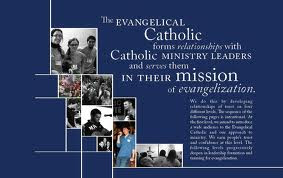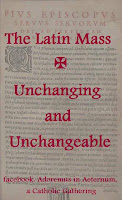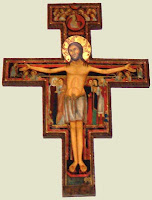In general, in Catholicism, the term "evangelical Catholicism" refers to Catholics who identify with the four historical characteristics of evangelicalism, similar to some of the evangelical characteristics I mentioned in a previous post.
Four of these characteristics are:
- A strong theological and devotional emphasis on Scripture (as understood through tradition).
- A stress on the life, death, and resurrection of Jesus Christ as the both the cause and opportunity for salvation for all mankind.
- A personal need for interior conversion.
- A deep commitment to evangelization.
They tend to identify evangelicals within Catholic tradition such as Saint Dominic (founder of the Dominican order). They also tend to emphasize the root meaning of the word, evangelical, which I described in an another previous post.
They also tend to emphasize some recent evangelical witness of some Popes, especially John Paul II in his Encyclical, The Mission of the Redeemer (Redemptoris Missio).
There is much more about all this at the website for the evangelical Catholic. http://www.evangelicalcatholic.org/
George Weigel, a Catholic theologian, author of a best-selling biography on Pope John Paul II, The End and the Beginning: Pope John Paul II–The Victory of Freedom, the Last Years, the Legacy, wrote a book this year (2013), Evangelical Catholicism: Deep Reform in the 21st Century (a book I have not read, so I am not endorsing in any way at this point).
The point is, that Catholics are more and more referring to themselves as Evangelicals (or evangelicals), without giving up their Catholic distinctiveness. I view this as a positive development, and encourage my Catholic friends and brothers to embrace this development and stretch themselves to see how they can embrace an evangelicalism which seems to be deeply embraced in Catholic tradition in whatever way they feel God is leading them to do so in a manner that develops their personal growing faith in Jesus Christ.
Back to Part 7
Back to Intro
Over to Who (or What) is an Evangelical Part 1
Back to Part 7
Back to Intro
Over to Who (or What) is an Evangelical Part 1
















































